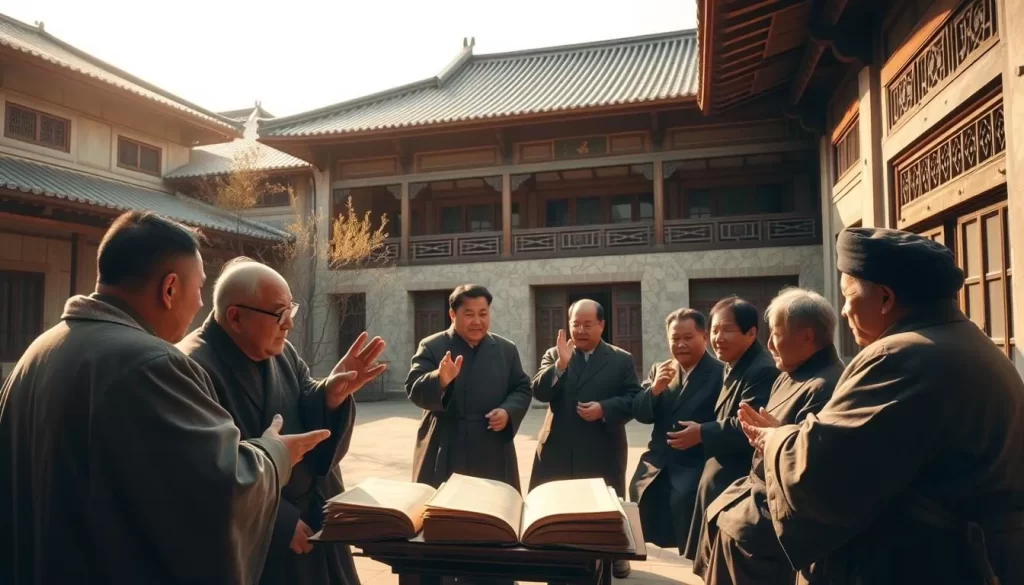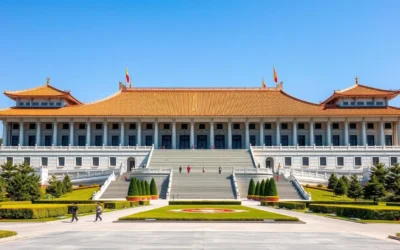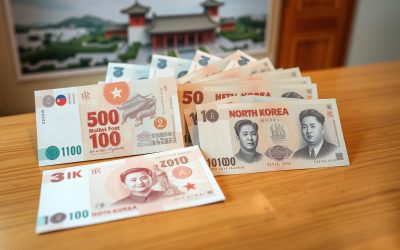✓ Accommodations✓ Flights✓ Rental Cars
North Korea is a country with a unique linguistic system that reflects its strong cultural identity. The Korean language is the primary means of communication, used by nearly 100% of the population. This language plays a crucial role in shaping the nation’s identity and social structure.
Hangul, the official script, is a source of national pride. Introduced by King Sejong, it simplifies writing and promotes literacy. The language is strictly regulated, ensuring purity and uniformity in vocabulary and dialect.
With over 24 million people, North Korea maintains a homogeneous linguistic environment. The emphasis on language as a tool for social control highlights its importance in daily life. Understanding this linguistic framework provides insight into the country’s cultural and political landscape.
Overview of North Korea’s Linguistic Landscape
The linguistic framework of this region is deeply tied to its cultural and demographic uniformity. With a population of approximately 24,852,000 people, the country maintains a highly homogeneous society. This uniformity supports a standardized language practice, ensuring consistency across communication.
Population and Cultural Homogeneity
Strict immigration policies have contributed to a largely ethnically uniform population. This demographic structure fosters a united linguistic landscape, where the Korean language serves as the primary means of communication. The lack of diversity reinforces the use of a single, standardized dialect.
Regulatory Influences on Language Use
State regulation plays a significant role in shaping everyday language. Government policies promote ideological purity, ensuring that vocabulary and expressions align with national values. These measures affect both formal and colloquial communication, creating a controlled cultural narrative.
For example, the Munhwaŏ dialect was adopted as the standard language in 1966, reflecting the state’s influence on linguistic norms. Such regulations highlight the government’s commitment to maintaining a unified linguistic identity.
Historical Evolution of the Korean Language
From its prehistoric origins, Korean has evolved into a modern linguistic marvel. This journey spans thousands of years, shaped by cultural, political, and social changes. Understanding this evolution gives you insight into how the language reflects the identity of its speakers.

From Prehistoric Roots to Old and Middle Korean
The Korean language traces its beginnings to prehistoric times. Early forms of the language were influenced by neighboring cultures, including Chinese and Japanese. By the 1st century BC, Chinese characters were introduced, becoming the medium for formal writing.
Old Korean emerged around the 7th century, marked by the use of Hanja (Chinese characters). Middle Korean followed, spanning from the 11th to the 16th centuries. This period saw significant changes in vocabulary and grammar, laying the foundation for modern Korean.
The Emergence of Modern Korean
Modern Korean began to take shape in the 17th century. The transition from a tonal to a non-tonal language marked a significant shift. King Sejong’s creation of Hangul in 1443 revolutionized writing, making it accessible to the common people.
Today, Korean is spoken by over 75 million people globally. Its evolution reflects the resilience and adaptability of the Korean word and its speakers.
| Period | Key Features |
|---|---|
| Prehistoric | Early forms influenced by neighboring cultures |
| Old Korean | Use of Hanja (Chinese characters) |
| Middle Korean | Significant changes in vocabulary and grammar |
| Modern Korean | Transition to non-tonal language; Hangul adoption |
North Korea: Official and widely spoken languages
The role of language in shaping national identity is particularly evident in this region. The Korean language serves as the cornerstone of communication, uniting its people under a shared linguistic framework.
State policies play a significant role in maintaining this uniformity. Rigorous measures ensure that vocabulary and expressions align with national values. This standardization reinforces the language as a tool for ideological purity.
Historical shifts, such as the adoption of Hangul, have further solidified the Korean language as a symbol of cultural pride. The transition from Hanja to Hangul in 1443 made writing accessible to all, fostering literacy and unity.
Today, the language remains a vital part of daily life. It reflects the resilience and adaptability of its speakers, ensuring its continued relevance in modern society.
| Period | Key Developments |
|---|---|
| 1443 | Creation of Hangul by King Sejong |
| 1949 | Abolishment of Chinese characters |
| 1966 | Adoption of Munhwaŏ as the standard dialect |
| Present | Language used as a tool for ideological unity |
Exploring Distinct North Korean Dialects
The dialects of this region offer a fascinating glimpse into its cultural diversity. Each dialect carries unique characteristics, shaped by geography and history. Understanding these variations helps you appreciate the richness of the language and its role in daily life.
Pyongan Dialect Characteristics
The Pyongan dialect is prominent in Pyongyang and nearby areas. It features distinct pronunciation, such as alveolar affricates, which set it apart from other regions. This dialect was chosen as a base for standardization due to its widespread use and cultural significance.
Vocabulary in the Pyongan dialect often reflects local traditions and history. For example, certain terms are unique to this region, showcasing its linguistic identity. These differences highlight how geography influences language development.
Munhwaŏ Dialect and Its Role
Munhwaŏ serves as the standard dialect in this region, established in 1966. It was designed to reflect the speech of the working class, replacing borrowed terms with pure Korean words. This standardization ensures uniformity in communication across the country.
Pronunciation in Munhwaŏ differs from other dialects, with vowels like ㅓ and ㅗ having distinct sounds. These variations underscore the language‘s adaptability and its role in fostering national unity.
Despite regional differences, all dialects adhere to state-mandated standards. This balance between diversity and uniformity reflects the cultural significance of language in shaping identity.
Comparing Language Variations Across the Korean Peninsula
The Korean Peninsula showcases fascinating linguistic variations shaped by decades of separation. Over 70 years of division have led to noticeable but mutually intelligible differences between the language used in the North and South. While grammar remains similar, vocabulary and pronunciation have evolved uniquely in each region.
North vs. South Dialectical Differences
One of the most striking contrasts lies in the dialects. The North favors the Pyong’an dialect, which avoids foreign loanwords and borrows from Russian instead. In contrast, the South embraces Western influences, incorporating English terms into everyday speech. For example, “ice cream” is “aisukeurim” in the South but “naenggi” in the North.
Pronunciation also varies significantly. The surname “Lee” is pronounced “I” in the South and “Ri” in the North. These subtle shifts in intonation and speech patterns reflect the cultural and ideological divide between the two regions.
Vocabulary and Pronunciation Divergences
Vocabulary differences are particularly evident in modern terms. South Korean language includes words like “juseu” for juice, while the North uses “danmul”. Similarly, “seat belt” is “sijang” in the South and “anjeonbeltu” in the North. These variations highlight the influence of external cultures on the South and the North’s purist approach.
Efforts like the Gyeoremal-keunsajeon project aim to bridge these gaps by creating a joint dictionary. This initiative underscores the shared linguistic heritage despite political and cultural differences.
State Language Policies and Their Cultural Impact
State-driven language policies in this region have shaped communication in profound ways. The government’s focus on linguistic purity has created a unique cultural narrative, emphasizing indigenous terms over foreign influences. This approach reflects a broader effort to maintain ideological unity and national identity.

Purification of the Language
In the 1960s, Kim Il Sung initiated a policy to remove loanwords from English, Japanese, and Russian. This purification drive aimed to replace foreign terms with pure Korean words, reinforcing cultural pride. For example, “ice cream” became “naenggi,” reflecting this shift.
These changes were not just about vocabulary. They were part of a larger effort to align language with national values. The first edition of the ideologically aligned dictionary, Hyontae Choseonmal Sachen, was published in 1968. This marked a significant step in standardizing speech.
Standardization and Censorship Measures
Standardization efforts extended beyond vocabulary. The government introduced strict measures to ensure uniformity in pronunciation and grammar. For instance, the Munhwaŏ dialect was adopted as the standard in 1966. This version of the language became the foundation for media and education.
Censorship also played a key role. Using South Korean vocabulary or slang could lead to severe penalties, including labor sentences. These measures aimed to eliminate external influences and maintain ideological purity.
| Policy | Impact |
|---|---|
| Purification Drive | Replaced foreign words with pure Korean terms |
| Standardization | Adopted Munhwaŏ as the official dialect |
| Censorship | Penalized use of South Korean vocabulary |
These policies have unified speech but also deepened differences with South Korea. For example, defectors often struggle with adjusting to South Korean vocabulary. This highlights the lasting impact of state-driven language reforms.
To learn more about how these policies tie into cultural identity, visit this resource.
The Enduring Legacy of Hangul
Hangul, the Korean alphabet, stands as a testament to innovation and cultural pride. Created in the 15th century by King Sejong the Great, it revolutionized literacy by offering a simple and logical writing system. This language innovation allowed commoners to read and write, breaking barriers imposed by complex Chinese characters.
King Sejong and the Creation of Hangul
King Sejong designed Hangul to be accessible to all, regardless of social level. The alphabet originally consisted of 28 letters, later simplified to 24. Its scientific design mirrors the shape of speech organs, making it intuitive to learn. A saying even suggests that a wise person can master it by lunchtime.
This language reform led to an information revolution. Farmers and commoners could now read and write, fostering economic and cultural growth. UNESCO recognized Hangul as a masterpiece of human cultural heritage in 1997, cementing its global significance.
Modern Applications in North Korea
Today, Hangul remains a symbol of cultural independence. In this region, it serves as the official writing system, reflecting national pride. The move away from Chinese characters after liberation further solidified its role in preserving identity.
Modern applications of Hangul extend beyond writing. It is used in media, education, and technology, showcasing its adaptability. This language continues to unite people, bridging traditional and modern word usage.
| Period | Key Developments |
|---|---|
| 1443 | Creation of Hangul by King Sejong |
| 1997 | UNESCO recognition as cultural heritage |
| Present | Primary script in media and education |
To learn more about the creation of Hangul, explore its historical and cultural significance.
Foreign Influences on North Korean Vocabulary
Despite strict language policies, foreign influences have subtly shaped North Korean vocabulary. While the government emphasizes linguistic purity, practical needs have led to the adoption of select loanwords. These borrowings, particularly from Russian and Chinese, reveal a fascinating balance between ideology and necessity.

Russian and Chinese Linguistic Contributions
Russian terms have entered the language primarily through technical and scientific fields. Words like “tank” (tank) and “kompyuter” (computer) are examples of this influence. These borrowings reflect historical ties during the Soviet era, when cooperation in technology and education was strong.
Chinese contributions, on the other hand, are deeply rooted in history. Many vocabulary items, especially those related to culture and philosophy, derive from Chinese characters. Despite efforts to replace them, these terms remain integral to the language.
Here are some examples of foreign influences:
- Russian: “tank” (tank), “kompyuter” (computer)
- Chinese: “cha” (tea), “gungfu” (martial arts)
This blend of foreign and indigenous terms highlights the adaptability of the language. While the government promotes pure Korean words, practical realities ensure that some foreign borrowings persist.
For more on how these influences fit into the broader linguistic framework, explore the North Korean standard language.
Linguistic Nuances: Expressions and Cultural Identity
The richness of a language often lies in its unique expressions and cultural undertones. In this region, colloquialisms and idioms are deeply woven into daily communication, offering a window into its cultural identity. These expressions are more than just words; they are markers of history, values, and societal norms.
Unique Colloquialisms and Idioms
Colloquial expressions here often carry metaphorical meanings that reflect local traditions. For example, the phrase “to carry water in a sieve” symbolizes futile efforts, a concept rooted in agricultural practices. Such idioms are not just linguistic quirks but cultural narratives passed down through generations.
Another example is the term “to build a house on sand,” which signifies instability. These expressions are integral to conveying deeper meanings and local color. They highlight how language evolves to reflect the lived experiences of its speakers.
Integration of Traditional Elements
Traditional elements are seamlessly integrated into everyday speech. Proverbs and sayings often draw from historical events or folklore, reinforcing cultural pride. For instance, “a single tree cannot make a forest” emphasizes community over individualism.
These expressions differ markedly from their counterparts in the South. While both regions share a linguistic heritage, their societal values shape distinct word choices and metaphors. This divergence underscores the role of language in shaping identity.
| Expression | Meaning |
|---|---|
| Carry water in a sieve | Futile efforts |
| Build a house on sand | Instability |
| A single tree cannot make a forest | Community over individualism |
Understanding these nuances helps you appreciate the cultural depth of the language. For more insights into the complexities of Korean culture and language, explore this resource.
Language Education and Literacy Initiatives
Education plays a pivotal role in shaping the linguistic landscape of this region. The state’s focus on literacy has led to near-universal education, ensuring that almost every speaker is fluent in the standardized language. This achievement is a result of rigorous state-driven programs that emphasize uniformity in vocabulary and pronunciation.

State-Driven Literacy Programs
The government has implemented strict policies to achieve high literacy rates. Compulsory education was extended to 12 years in 2013, ensuring that students receive consistent language training. This system includes one year of kindergarten, five years of primary school, and six years of secondary education.
Printed materials and textbooks are carefully curated to align with national values. For example, English education has been prioritized to adopt global technologies and foster international exchanges. This approach ensures that students are not only literate but also prepared for modern challenges.
Impact on National Communication
These initiatives have reinforced social cohesion by standardizing communication. The emphasis on homogeneity in education has created a unified linguistic identity, where every word reflects national pride. This uniformity extends to media, literature, and daily conversations.
Linguists note that these strategies have deepened the divide with neighboring regions. While the educational system fosters internal unity, it also highlights the distinctiveness of the local language.
| Year | Key Development |
|---|---|
| 1950 | Compulsory primary education introduced |
| 1975 | 11-year compulsory education system implemented |
| 2012 | Education extended to 12 years |
To learn more about the evolution of foreign language education, explore how it has shaped modern communication.
Conclusion
The linguistic identity of this region reflects a blend of historical depth and modern control. From the evolution of Hangul to the standardization of dialects, the language has been a cornerstone of cultural pride and unity. State policies have shaped its use, ensuring it aligns with national values and ideological goals.
Efforts to maintain linguistic purity, such as the removal of foreign terms, highlight the importance of the word in shaping identity. Literacy initiatives have further reinforced this, creating a unified communication system that bridges tradition and modernity.
Understanding this linguistic framework offers insight into how language operates as both a cultural artifact and a tool for control. For more on the broader implications of these policies, explore this resource.
The above is subject to change.
Check back often to TRAVEL.COM for the latest travel tips and deals.




